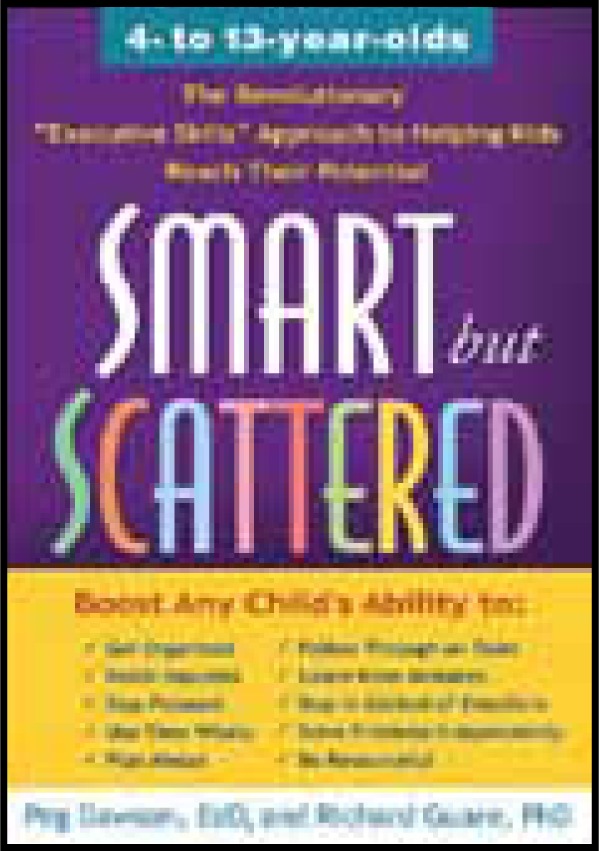

This review intends to contrast two books written about executive functioning. The first book, “Promoting Executive Function in the Classroom” (Lynn Meltzer) is targeted at teachers. Its aim is to encourage educators to teach executive function skills to all school aged children. The primary focus is on special-needs learners, such as individuals with symptoms of attention-deficit hyperactivity disorder. The book is presented fairly clearly, in that the figures and tables presented condense the information from the general text in a meaningful way. Although the large format promotes the photocopying of worksheets, there are only a few worksheets provided and they appear to have no specific rationale to their use.
The major shortcoming of this book is its reliance on techniques taught through organizations which Meltzer co-founded, including the Institute for Learning and Development (ILD) and ResearchILD. Both of these organizations are citied widely throughout the book, and it is difficult for the reader to feel that they have fully understood how they can help their students unless they seek out resources through these other institutions. Unfortunately, because too many examples stem from Meltzer’s organizations, there is a bit of a sense of advertising for these other organizations. For example, in helping to assess students, Meltzer suggests using several MetaCOG surveys which are available from ResearchILD. In showcasing strategies to help students organize their work, the STAR strategy or Triple Note strategy are suggested, though further information must be garnered from Meltzer’s organizations. Even the clinical vignettes provided at the end of the book highlight strategies that cannot be fully implemented unless the reader purchases materials from Meltzer’s organizations. Although there are a few specific strategies that that can be applied in the classroom without the additional aids, they are difficult to identify as they are scattered within the book alongside strategies that require support through Meltzer’s organizations. This book is difficult to digest as a stand-alone reference, and it would most useful as an adjunct to other executive functioning books.
The second book about executive functioning, “Smart but Scattered” (Dawson & Guare), is aimed at parents who have children who may be struggling with various aspects of their lives, including their academic life, their interactions with peers, and their relationships at home. It proposes to teach parents to train their children to improve their executive skills set. The wide range of activities targeted includes daily routines, such as cleaning up a bedroom, learning to manage negative behaviours and emotions, and tackling homework. The writing is clear overall and it is fun to read. There are some concerns about the excess emphasis on theoretical aspects in the first chapter. Parents who may also have executive skills deficits may find this chapter heavy to read and may have a hard time staying focused on the meaning. This book is quite interactive, and one strength of this book is its use of questionnaires to assess skills. Questionnaires are provided both for children (of various ages) as well as parents, so that they can both see their strengths and weaknesses. Following the questionnaires, there are examples of how the executive skills strengths and weaknesses in both parents and children affect their interaction style.
Parents are encouraged to use this knowledge to increase their patience and improve their relationship. This book is also strong in that many specific examples are given that show how to apply skills building in real-life situations. Techniques to teach executive skills are shown in a stepwise manner, and planning sheets are available throughout the text. There are also numerous fill-in sheets available for parents to use. Another strength of this book is its focus on the emotional aspect of executive functioning, and providing strategies to bolster the emotional skill set of children. One drawback to this book is that the physical format is smaller, so it is less convenient for parents to photocopy and utilize the fill-in sheets provided. This book would be strongly recommended for any parent who wishes to help their children maximize their potential, even if they do not have identified academic or behavioural struggles.


